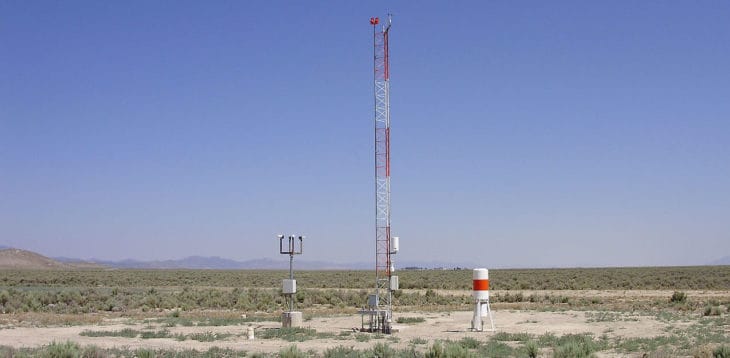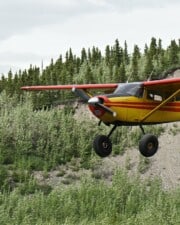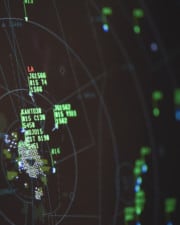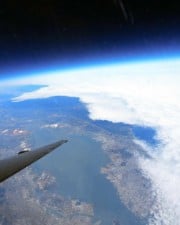Weather is the most crucial factor affecting airport operations. At towered airports around the world, air traffic controllers report on wind and visibility conditions so that arriving pilots know what to expect. But what do pilots do when they arrive at non-towered (also known as uncontrolled) airports?
The answer is that many airfields have automated weather stations that broadcast important weather details continuously on a specific radio frequency. These automated stations vary in their capabilities, but the two most common types are automated surface observation stations (ASOS) and automated weather observation systems (AWOS).

The Importance of Automated Weather for Pilots
A vast majority of airports worldwide are uncontrolled fields, meaning they have no air traffic control tower. While ATC obviously helps separate planes, they also perform the vital function of relaying weather and airport conditions to pilots to help prepare them for landing.
Even at airports with towers, ATC professionals are not necessarily meteorologists. They use standardized techniques to report the weather to pilots, but airports also serve and the primary reporting locations for National Weather Service observations. To help standardize the process, automated observations are extremely helpful in keeping the data consistent.
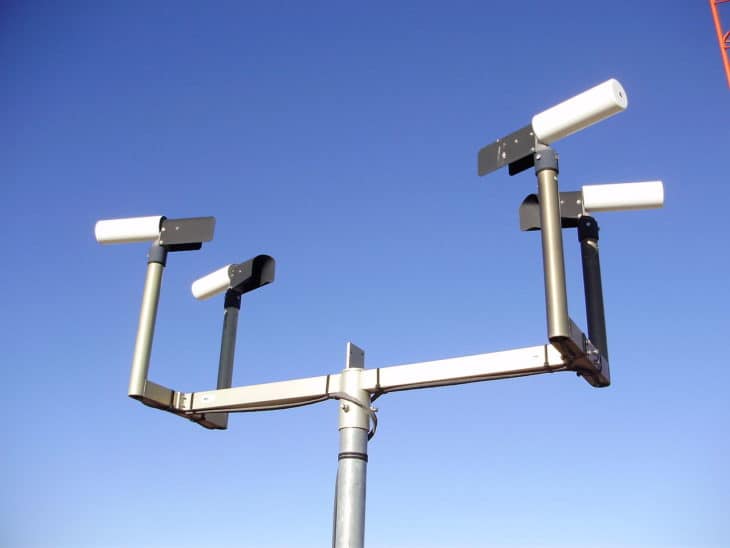
What is the Difference Between AWOS and ASOS?
AWOS was the original automated weather system for installations at airports. AWOS was installed by All Weather Inc. and certified by the FAA in the 1990s. It comes in seven levels of service, depending on which sensors are connected and how the system is certified.
AWOS Levels
- AWOS-A only reports the local altimeter setting.
- AWOS-I reports the altimeter setting, to plus wind speed and direction, temperature and dew point, and density altitude.
- AWOS-IIAV adds the ability to report on precipitation information.
- AWOS-III adds a ceilometer than can report sky conditions, including cloud heights and cloud density.
- AWOS-IIIP has a precipitation discriminator that can tell the difference between drizzle, rain, snow, and freezing rain.
- AWOS-IIIPT includes a thunderstorm sensor that can detect lightning.
- AWOS-IIIPTZ also has a sensor that can detect icing conditions on the runway.
ASOS installations are newer and more advanced than AWOS. All ASOS stations match the capabilities of the AWOS-III or are even better. They have been installed around the country as a joint effort between the FAA, the NWS (National Weather Service), and the DOD (Department of Defense).
ASOS sites are federally installed and controlled, while AWOS systems are available for state and local governments to purchase and install. The current highest level of certification for an AWOS system is AWOS-C, which is functionally identical to ASOS and provides METAR weather reports.
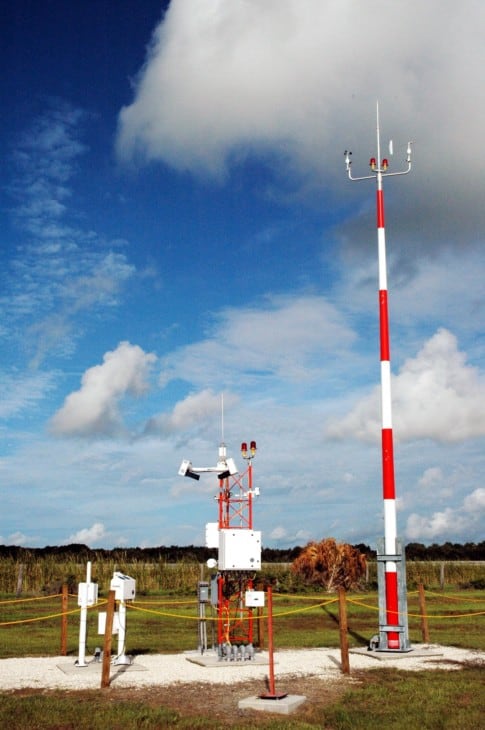
Using an ASOS or AWOS
Most of these differences are more or less invisible to the pilot or end-user. Both stations automatically prepare weather reports and transmit them in various ways. Pilots see these reports in three ways. When preparing to approach or depart an airport, they can tune their VHF radios to the AWOS/ASOS’s frequency. There, a computer-generated voice continuously reads off the current weather observations.
At airports with towers, air traffic controllers usually get the ASOS information on a computer display in the tower cab. They then use this information when reporting weather to pilots, including when they record the ATIS broadcast. If the tower closes overnight, the ATIS broadcast is usually replaced with the ASOS computer-generated voice.
Pilots can also call a telephone number to hear the same computer voice. This is a handy feature if the pilot is a flight planning and trying to get information about areas where there are no human observers to share the weather. It’s especially valuable at remote uncontrolled airports.
The third way that pilots get reports is through text weather reports, specifically METARs. A METAR is a coded, standardized, and hourly weather observation. METARs are collected by the FAA and National Weather Service.
By viewing the past few hours’ METAR reports, a pilot can see the weather trends at an airport, which can be much more valuable than just one instantaneous report. For example, by viewing several weather reports, they may notice that ceilings or visibility are getting lower and lower. From that, they can make the reasonable assumption that the trend will continue and that the weather will be even worse by the time they arrive.
When viewing METARs created by these systems, the presence of the code “AUTO” in the text indicates that the system makes the observation and a human weather observer is not logged into the system to augment or curate the data. That’s an important distinction since the sensors on ASOS units take time averages to calculate ceilings and visibility. There are times when the results will be a little askew, and a human observer can clarify the results.
Online, anyone can view METAR results from AWOS or ASOS stations.
How Else are ASOS Systems Used?
ASOS observations are not just used by pilots. These stations are the backbone weather reporting system in the United States. Climate and meteorological researchers use them every day. There are even a few ASOS stations not located at airports.
METAR reports often contain very detailed remarks that are of little use to pilots. For example, ASOS stations often report temperature and dew point to the tenth of a degree and six, twelve, and twenty-four hour precipitation totals.

Limitations of Automatic Observations
AWOS and ASOS stations save air traffic controllers and weather observers a lot of work, but there are still situations where the computers can’t figure things out. Each sensor that makes up these systems has limitations. For example, the ceilometer used on ASOS stations cannot detect clouds above 12,000 feet.
There are also many types of precipitation and particulate that they cannot differentiate. They cannot report smoke, dusk, or volcanic ash, and they can’t see intermittent weather events like hail or ice pellets.
Visibility is also sometimes a problem for the sensors. Patchy fog is a problem in that if the obscuration is not directly on top of the sensor, the unit cannot see it. As a result, runways could be completely fogged in, but the automated observer might report good visibility. Alternately, the ASOS might indicate dense fog while the runways are clear.
Related Posts
